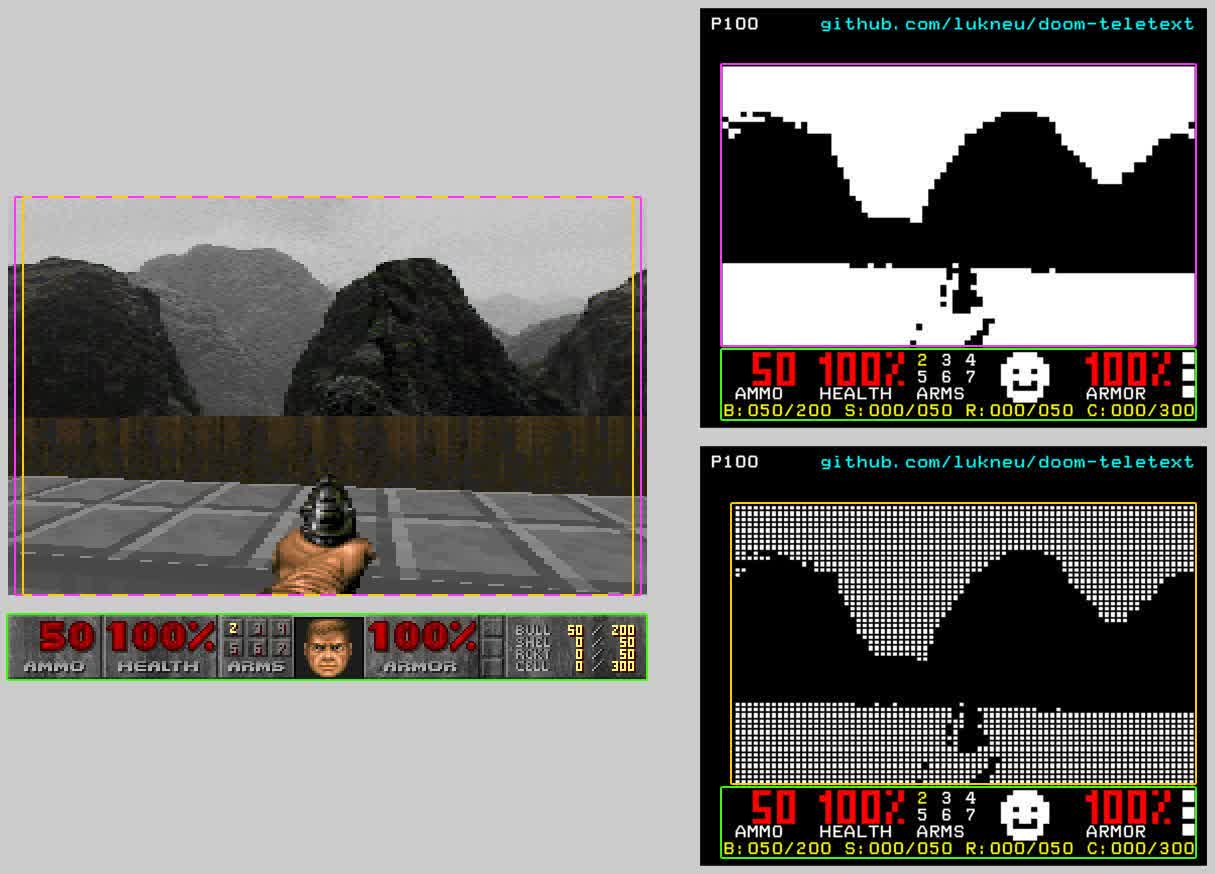Why it matters: The list of low-power devices and programs that run Doom hasn't stopped growing. It now includes a candy bar, Notepad, John Deere combine harvesters, a McDonald's self-order kiosk, a Lego piece, a milliwatt neural chip, and more. The latest addition is the decades-old TV graphics transmission platform Teletext.
A modder recently unveiled a version of the 1993 FPS classic Doom through Teletext, a system for beaming simple graphics to television sets dating back to the 1970s. The modder, named lukneu, made several adjustments to adapt the game to Teletext, leaving detailed instructions for users interested in trying it for themselves.
The mod runs the game on a PC while transmitting the video signal to a TV or another device with Teletext-reading software (like a Raspberry Pi). The result displays simple black-and-white graphics while optimizing the user interface and game instructions to display properly in Teletext, replacing Doomguy's face with a simple smiley face. The visuals could have been more detailed, but lukneu chose to support the original 1976 Level 1 Teletext and its simple character repertoire for a more authentic feel.

Users can play the game with various input devices, including a TV remote. However, the video demonstration shows the remote's response time might be somewhat slow for an action game like Doom. More features are on the way, including auto map support, color graphics, ASCII characters, and a render mode that only draws edges.
Like most Doom mods, playing the Teletext version requires a WAD file for the first Doom game. Lukneu has only tested it with the shareware version, but any WAD that doesn't change the UI or the names of levels and difficulty settings should be compatible. The modder has only built Teletext Doom to run on Linux so far, but provided materials on GitHub to ensure running versions for Windows or other platforms shouldn't be too difficult.
Teletext is a standard for transmitting relatively simple information packets containing text or software over broadcast signals. Starting in the 1970s with a limited range of characters and colors, it gained complexity over the decades until fading into obscurity with the rise of digital TV, advanced set-top boxes, and mobile devices. Despite its age and apparent obsolescence, Teletext services are still available in many countries, mainly in Europe.
Found is a TechSpot feature where we share clever, funny, or otherwise interesting stuff from around the web.